|
On Thursday afternoon Andrew Carter's patience paid off as he waited with camera poised to catch the moment of the swift diving into its box, then having a peek out before taking off again. Thank you for sharing these remarkable pictures!
A delightful story is in the Guardian (20th January) about John Stimpson in Cambridgeshire who made it his mission to help swifts find appropriate nesting sites. Having just turned 80, Mr Stimpson is proud to have reached his goal of building 30,000 swift boxes and is intent on continuing for as long as he can. Thank you to Anne Perkins for bringing the story to our attention. You can read the full article by clicking on the Guardian link above.
An update from Elizabeth Forbes  Photo: Abby Eaton Photo: Abby Eaton My warmest thanks to everyone who supported our campaign - volunteering to host a nest box (even if your house turned out not to be suitable), as surveyors or just by being encouraging and feeding in information. Swifts are now officially 'endangered', but we can all take some satisfaction from having 'done our bit' to help our own population to thrive. So, with the arrival of the swifts from April on ward to look forward to, now is the time to report on where we'll be starting from. Inspired by the talk via Zoom last January by Ed Mayer of Swift Conservation, people responded from across the community: from Teffont Evias to Semley, Hampshire Swifts installed a total of 32 nest boxes, with six also playing recordings of swift calls to attract interest. We are so grateful to Hampshire Swifts for their support from the outset right up to the present day when the last boxes are about to be installed. The report by Andrew Graham of the survey we then undertook is found here. This suggests there were at least six active nests and that the overall population is around 35-40 birds, of which around 23 may be looking for new homes this breeding season. As we said, we didn't expect new boxes to have residents straight away - the four boxes I put up on my own house in 2019 have still not got established occupants, but there was certainly interest last year so I hope you'll share my patient optimism! In the future, with the information now available on where in the village there is the most activity, our survey will most usefully focus on feedback from nest box hosts and previously recorded active nests. Finally, I am absolutely delighted to say that Laura Downer, who so very ably kept the whole complex campaign running smoothly, has now offered also to take over the practical side of things and Andrew will continue his wonderful work on the statistics. In a way it's not for me to thank them for their very hard work, but I do, most warmly. So please keep in touch with Laura, from now on, and of course let her know if you'd like to help. Again I wish you all the very best 2022 has to offer and thank you again on behalf of Tisbury Swifts. Nearly all the dozen or so volunteer surveyors were able to come to The Boot on 8 July, for a final briefing and initial survey of each of the ten areas in the village. Informal reports indicate that activity was patchy in the extreme that evening, but what Andrew, Laura and I observed is at least encouraging. It seems that Lady Down View and The Quarry are both often centres of activity although we're not sure how many birds are commuting between them! This video of activity last Thursday in Lady Down View is a welcome demonstration of what you might see, if not this year then in future years, in your own areas. It's best viewed on full screen - click the button bottom right.
Please do upload any videos you are able to take maybe on DropBox, so that I can download them for this website. The weather forecast is that we can expect a St Swithun's day switch to warmer, more settled times and this will encourage the swifts back down to what we regard as more normal summertime activity.  Photo: Abby Eaton Photo: Abby Eaton First, the Committee's decision to go ahead, then Ed Mayer's brilliant talk in January, recording all the 'expressions of interest', visiting all the potential homes for swifts throughout the village, mapping them and previous known/believed nest sites village-wide, commissioning over 30 nest boxes, installing them and call systems - it's been quite an adventure. Without the encouragement of Ed Mayer at Swift Conservation, and the advice and practical support of Tim Norriss of Hampshire Swifts, we'd definitely not be where we now are. Which is - surveying the existing population to give us a base-line from which to monitor what we hope will be its growth in the years to come. Andrew Graham, our wildlife recording expert, emailed everyone who's expressed interest in the campaign explaining what's involved and asking for help in recording observations. Those who can are getting together on Thursday before going out to each of the 10 areas of the village Andrew has outlined.
By way of celebration and to inspire us, here is the 'library' of videos that have come my way over the last few years. Enjoy!
Because this is a long term project, we'll be repeating the survey every year at around this time. so if you'd like to be involved in future, please email Laura, who's managed to keep us in some kind of order as we made our way through this unknown territory. Well, there's a lot to report! 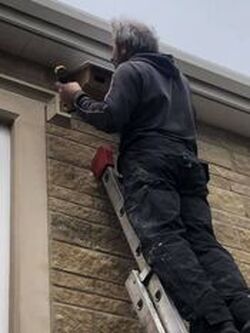 Nest boxes We were absolutely thrilled that we ended up with 17 homes for humans now also equipped with a total of 32 new homes for swifts - extending from Teffont Evias (we could hardly refuse to include Laura Downer, our Project Manager) to the outback of Semley (we couldn't resist such a lovely property, with farm buildings nearby for possible expansion of the we-hope colony). We were greatly helped in the planning by Andrew Graham's mapping skills. Thank you all! We emphasised to everyone that this is a long-term project - it took a similar one ten years to get from a single breeding pair to 35, so we have to grit our teeth, especially in this most swift-unfriendly spring when all our migrators are having a hard time. We also installed six calling systems, on properties deemed too far from a known nest site to attract residents from there. We cannot thank Hampshire Swifts enough for their whole-hearted, unstinting support - and Ed Mayer of Swift-Conservation for his January talk, which inspired this response. For more about this, go to Tisbury Focus magazine May issue for a wonderful feature with a lovely front cover photo showing the installation team in action. Next stage What we now have to do is undertake a survey of the village to identify currently active nest sites and the overall size of our local population. We'll do this in early July, when there's Swift Awareness Week from 3-11. Meanwhile ... swifts are in the air or sometimes, not: here's what to do if you find one on the ground In the last five years, it's been a privilege to hold four swifts in my hand - two live young which I took to the Wildlife Hospital, one moribund so sadly didn't make it and one dead that I found on Cuffs Lane. So it's quite possible you may find one yourself. I don't know if the moribund one would have survived if I'd known to try re-hydrating it, as described here on the Swift Conservation website and in this excellent leaflet about rescuing swifts. It's drafted for vets but pretty good for ordinary people. The basic is: Swifts can't take off from the ground because their wings are too long and their legs too short to give them the necessary thrust. So if you find one on the ground, to see if it's strong enough to fly, hold it out at head height on open palms, give it time to think and if it can, it will. DO NOT throw it into the air.  If it can't, follow the advice in the leaflet and take it to our local Wiltshire Wildlife Hospital at Newton Tony - SP4 0HW. They take in anything up to 20 swifts a year, some as tiny as this one, and nurture them till they're big and strong enough to join the migration back to Africa. Call 07850 778752 first for advice, but they're open 24 hours for patients. Andrew took over the late David Rear's responsibility for monitoring butterflies in the Oddford Vale and also monitors elsewhere in Wiltshire, he's been doing weekly counts of birds in his garden for several years and last summer extended this to using a trap provided by Butterfly Conservation to monitor moths in his garden as well - hence the stunning photographs posted on this website.
We are hoping to recruit volunteers to help us monitor the population of swifts in Tisbury, after the new nest boxes are installed in April. We already know of a number of nest sites that have been used until last year and it is vital that we check whether they are again this year. For more about wildlife recording, go to that page. The talk by Edward Mayer of Swift Conservation was the starting point - more details on the Talks/What you missed page. So - what are we doing to protect existing nest sites and provide new ones for the young?
First of all, we are now a team of three:
The plan
A range of leaflets from Swift Conservation covers pretty well all the questions you may have, starting with Swifts for homeowners.
Thank you - it's going to be an exciting year! Swifts just are the most amazing creatures! We're already determined to do everything we can to support our Tisbury swifts, but Edward Mayer's immense knowledge and contagious enthusiasm has made us even more convinced of the urgent need to do this. He made the point at the outset that these are birds that we humans really can help: find out more about our campaign by searching under Swifts Project in the Categories to the right. Edward told us that their story began around 49m years ago, as fossils looking much like today's swifts are found over much of Europe dating back that far. Humans have been around for 150m years, so we've been enjoying swifts for half our existence. But now, because of us, they are in danger: numbers are down by over 50% in the UK alone, between 1995 and 2015 according to the BTO. We need to do something to stop this, first because swifts provide a very valuable service which certainly contributes to our general well-being. They eat thousands and thousands of insects that would otherwise make our lives a misery or ruin our crops. This is becoming an ever more urgent requirement: at the same time as the swift population declines, global warming is bringing different species of insects from Africa into Europe. Latest arrival in France is the tiger mosquito which carries tropical diseases such as dengue feaver, West Nile virus and chickengunya - treatable but not always curable. But it's the overall decline in insect life eg of 80% between 1981 and 2013 that along with disappearing nest sites that is more of a problem. Most of that is due to the farming practices ie the preference for chemical treatment instead of more sustainable – indeed regenerative – methods which, thankfully, are becoming more widespread (see Peter Thompson's talk on 19 November, summarised below). But the other reason is that without swifts joyfully screaming overhead, our summers especially in our villages, towns and cities, would be miserably silent! Swifts originally nested in very large, old trees and some are still doing this in the Abernethy Forest in Scotland, a nature reserve that includes remnants of the ancient Caledonian Forest, and also in the ancient Bialoweza Forest on the Poland-Belorus border. But now they're mainly urban birds – so much so that the German word for swift is Mauersegler which means wall-sailor. Our swifts make a return journey of 14,000 miles to South East Africa and back, every single year, at an altitude of around 8000 feet and taking just 16 days each way. It is their construction that makes this possible and for almost every aspect of their lives to be carried out in mid-air, from grooming to mating – and it's been studied by scientists designing modern aircraft. Their wings rotate at the base - this gives them extraordinary agility as in this video which we posted before the talk. This inspired the design of swing-wing planes including the F111 fighter jet. Hummingbirds have this same feature, which enables them to hover, and they are descended from the same prehistoric ancestor. Swifts' wings are also extremely thin and this 'high aspect ratio' provides exceptional 'fuel economy'. It means they can fly for four days across the Gulf of Guinea in West Africa without food – no insects over water – or drink. And it's this same feature that makes the Dreamliner popular with the airlines! Swifts always return to the same nest site and if they find this closed or disappeared, they won't breed that year. The destruction of nests is a major factor in the decline in swift populations – down by 57% in Europe between 1995 and 2017. But if such work is essential, information on how to preserve the colony is given in the Swift Conservation leaflets. Nor will they breed if they've been short of food on the way, or have met unseasonably cold weather – this happened last year in Greece. But if the nest site is safe they can continue to breed for up to 20 years, beginning when they're three years old ie have successfully completed their migration three times.  Photo: Elizabeth Forbes Photo: Elizabeth Forbes Often, swifts nest in a minute opening at the top of stone- or brickwork with enough space on a flat surface behind – this is the entrance to the nest on my house. Nests aren't luxurious, just whatever swifts can catch in the sky – bits of grass, feathers etc The sexes migrate separately, but the sooner they get back to the nest site and start fattening themselves up the better, because the young only leave the nest when fully fledged, and this takes around 6 weeks. I did once witness one fledging from the nest on my house and I'll never forget it. I'd been observing the little white face peeping out, and one evening it launched itself out with a sharp clap of wings, and was gone. 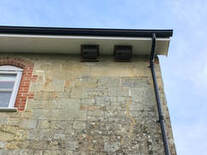 Swift numbers are in swift (!) decline in the UK partly due to lack of nesting sites - they traditionally nested in holes under the eaves of houses and now that houses have been upgraded and modernised they no longer have access to suitable nesting places. Swifts arrive from Africa at the end of April or beginning of May and leave again in August. They feed, mate and sleep on the wing and only land to nest. Tisbury Natural History Society has paid for two woodcrete nest boxes for swifts which have now been erected on the west side of the Brewery building under the eaves overlooking St John’s churchyard. They were put there after permission was granted by David Smale who is the representative of the residents' association. We hope to find someone living in the Brewery near the boxes willing to have a DVD playing swift calls as this may encourage the birds returning in Spring to use our boxes. If you are aware of swifts nesting anywhere in Tisbury, please let us know - see Contacts page. Meanwhile, take a few minutes to enjoy this delightful video about swifts from Gloria Molina, a swift activist in Segovia in Spain. Just click on the link (there is a translation into English): MANTRA DEL VENCEJO The British Trust for Ornithology has published a book about our summer migrants - Flightlines, by Mike Toms, available from the BTO at https://app.bto.org/btos/product/viewProduct.htmlx?id=0b5e04965d7f8a29015e3cd7dd870101 If you know of any other projects the Society might undertake, please do get in touch.
|
Photo: Avocets (Izzy Fry)
The headers display photos taken by our members. Do get in touch via the Contact Form if you'd like to submit a photo for selection.
Archives
May 2024
Categories
All
|

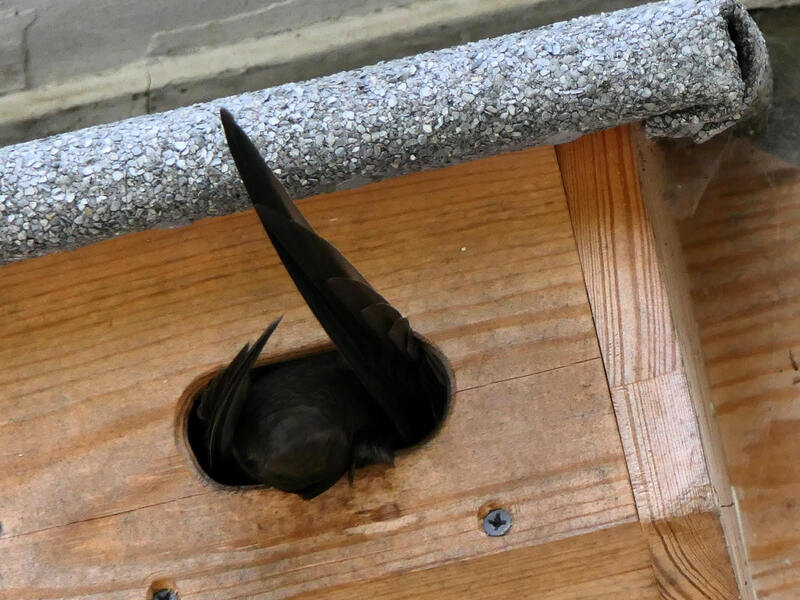
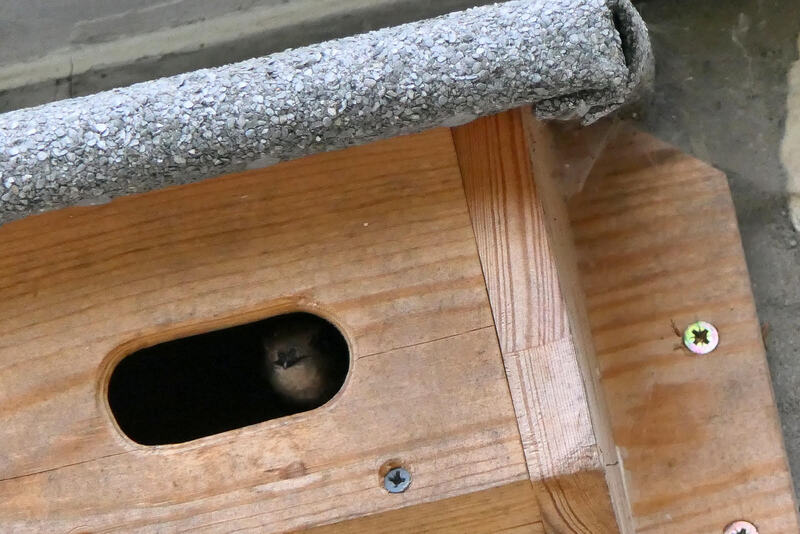




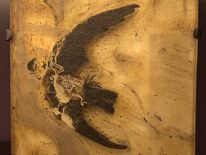

 RSS Feed
RSS Feed